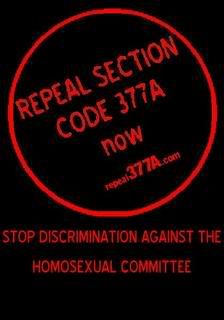The NS (Amendment) act was passed on 14 March 1967, as the Singapore government felt that it was necessary to build a substantial military force. The country only had about 1000 soldiers at the time of independence. In the late 1960s, the British government had decided to withdraw its troops and bases East of Suez, which included the troops stationed in Singapore. That prompted the government to implement a conscription program for the country's defence. It adopted a conscription model drawing on elements of the Swiss and Israeli national conscription schemes. This was done with the help of Israeli military advisers who were closely involved in the establishment of the Singapore armed forces.[1]
The stated rationale behind conscription is two-fold. Firstly, because Singapore has a population of about 4 million (as of 2004), an army solely of regulars would be too small to defend the country. Secondly, national service is supposed to foster racial harmony among the Chinese, Malay, Indian, and other ethnic groups in the country by requiring all males to go through similar experiences and thus being able to identify themselves to share a common destiny of defending the nation. (see multiracialism).
Enlistment
Male Singaporean citizens and permanent residents alike are required to register for National Service upon reaching the age of 16½ years, during which they would also be required to undergo a mandatory medical examination to determine their medical status, known as Physical Employment Status (PES), which is used as a guideline as to which vocation the person is placed in.
Exemptions are rare and are usually due to disability or serious medical conditions certified by the SAF Medical Board. One instance of rare cases of exemption would be if the enlistment would cause hardship to the enlistee's family, be it financially or otherwise, although this particular exemption is rarely granted.
| Physical Employment Status (PES) | ||
|---|---|---|
| PES code[2] | Status | |
| PES A | Fit for all operational vocations (Full BMT) | |
| PES B | Fit for most operational vocations (Full BMT) | |
| PES BP | Fit for 4 months/26 weeks full BMT (applicable only to obese recruits) | |
| PES C | Fit for some operational vocations (Modified BMT)
| |
| PES D | Temporarily unfit for grading and pending further review | |
| PES E | Fit for administrative duties only
| |
| PES F | Medically unfit for any form of service | |
Male children who take up permanent residency status through their permanent resident parent's sponsorship will be required to serve National Service like other Singaporean males [1]. However, foreigners who take up jobs in Singapore or become permanent residents of Singapore will not be required to serve National Service.
They are then called up for enlistment at the age of 18, although most Singaporean males would usually choose to complete their tertiary education in the respective Polytechnics, High Schools, Junior Colleges, Pre-University courses or other institutions before commencing the mandatory duration in which they are required to serve. Those who voluntarily opt for early enlistment with the consent of their parents are allowed to commence full-time national service at the age of 16½.
The duration of the conscription for a typical Singaporean male usually spans over a period of 2 or 2½ years depending on his educational qualifications. As an incentive of some sort, the duration may be cut by a further 2 months, if potential enlistees are able to obtain a silver or gold for their physical fitness test (NAPFA) prior to enlistment. The duration of National Service has since undergone some minor changes and it now stands at a period of 1 years 10 months to a maximum of 2 years.
| Enlisted Date[3] | Rank | Full-Time NS Duration1 | Qualifications | Remarks |
|---|---|---|---|---|
| 1971 till Nov 2004 | Lance Corporal or lower | 2 years | O-level, N-Level and ITC or lower | |
| 1971 till May 2004 | Corporal and higher | 2 years 6 months | A-level and Diploma qualifications or higher | Will be promoted to at least the rank of Corporal |
| Jun 2004 till Nov 2004 | Corporal and higher | 2 years 2 months | A-level and Diploma qualifications or higher | Then current serving NSF wil have 2 months reduction instead |
| From Dec 2004 | All ranks | 2 years | All qualifications | |
| 1. NAPFA Silver before enlistment get further 2 months reduction | ||||
Refusal to serve and conscientious objection
Those who are liable to serve national service, but refuse to, are charged under an Enlistment Act. If convicted, face imprisonment for a period of three years and a fine of S$10,000. Controversy arose when the penalties were increased in January 2006 after Melvyn Tan, who was born in Singapore, received a fine for defaulting on his National Service obligations. Tan left for London to study music during his enlistment age and later acquired British nationality. In parliament, Defence Minister Teo Chee Hean provided some illustration of the punishments defaulters would face:[4]
- Where the default period exceeds two years but the defaulter is young enough to serve his full-time and operationally ready NS duties in full, MINDEF will press for a short jail sentence.
- Where the defaulter has reached an age when he cannot serve his full-time NS in a combat vocation or fulfil his operationally ready NS obligations in full, a longer jail sentence to reflect the period of NS he has evaded may be appropriate.
- Where the defaulter has reached an age when he cannot be called up for NS at all, a jail sentence up to the maximum of three years may be appropriate.
Each year, a small number of people are convicted for their failure to enlist or refusal to serve in the military.[5] Most of them are Jehovah's Witnesses, who are usually court-martialled and sentenced to three years of imprisonment, although they are usually held in a low security detention facility and separated from other military offenders. The government doesn't consider Conscientious objection to be a legal reason for refusal to serve NS. Since 1972, Jehovah's Witnesses as a religious group have been banned from Singapore.[6]
Economic and social impact
There have been reports of reservists who were denied job opportunities because of their NS commitments.[7] Among some Singaporeans, there is a sense of dissatisfaction with regard to the foreigners who do not have to serve NS, but are able enjoy the fruits of Singapore's economic success.[8]
Also, the stipend given to full-time NSFs are usually below what he would would receive in an open labor market.[9] In comparison, the salary paid to a career soldier performing an equivalent task would otherwise be very competitive, at times even higher than civilian pay[10][11], given the increased risk and nature of the job. This can be seen as a form of hidden taxation, since the conscript is coerced into serving at levels of compensation below what would induced them to sign up as a career soldier and are hence underpaid with tax-in-kind.[12]
Aligning with the increasing education levels of conscripts [13], a lengthy period of conscription dams the economic contributions of these young men in a labor market where unemployment rate is low[14], in which their specific skill and talent would be better valued by employers rather than being accorded and generalized by rank or vocation.[11] This is against the principle of comparative advantage, offering an ineffective match between people and jobs, incurring increased opportunity cost to the conscript.[12]
With a system of depressed compensation enforced by the government through legislation, it reduces the efficiency, hence productivity of labor when manpower is in abundance supply and inexpensive. This is magnified in peacetime, when the cost of over-manning, organizing and maintaining a large passive standing army put more burden on the government expenditure than the tangible gain it benefit.[12]
Given the regularity of conscripts turnover, the cost of retraining, adapting and familiarizing a soldier with equipment and machinery increases, as does the incident of casualties and accidents.[12] It also raises the question of social equality, since it is only young men and not women who are drafted into conscription where it may be viewed as discriminatory, with the delayed access to employment or further education.[12]
Military service
There are several types of Basic Military Training (BMT) conducted by the SAF at its BMT Centre on Pulau Tekong, which is an island off the north-east coast of Singapore. Medically fit NSFs who hold educational qualifications from Junior Colleges and other institutions of higher learning undergo a 10-week Enhanced BMT program. Those from lower educational backgrounds undergo a similar program (Standard BMT program), but without a Sit Test (Situational Test), which is a test used to assess trainees for posting to command schools like the School of Infantry Specialists (SISPEC) and Officer Cadet School (OCS), occasionally a select few will later be posted to the Police service for training as an Inspector.
NSFs who are less medically fit, depending on their particular medical condition, either have to go a 7-week Modified BMT or just a 1-week induction program for recruits with certain medical conditions.[16] NSFs who are medically fit, but have failed the pre-enlistment Individual Physical Proficiency Test (IPPT), will have to undergo an additional 4-week Physical Training Phase (PTP), making it a 13-week BMT program for them. Conscripts who are overweight go through special BMT programs, depending on the severity of their obesity, with the longest BMT program lasting 4 months (16 weeks) for the most obese trainees. The obesity of a conscript is determined by his Body Mass Index (BMI) during the pre-enlistment medical checkup.
Medically fit NSmen also have to take the IPPT every year as part of their training program.
Police Service
Though a majority will serve in the army for their National Service, a considerable number of enlistees will serve their NS years in the Police Force. For those who are chosen to serve in the Police Force, they will undergo training at the Home Team Academy where they will study the Penal code and standard police protocol. After training at the Academy, they will be posted to various Departments of the Force eg. Special Operations Command (SOC), Logistics, Land divisions, Airport Police, etc. Those who are posted to the Police Coast Guard (PCG) or Police KINS will undergo further training. Selection of Officer Cadet Trainees (OCTs) to undergo the NS Police Inspector Course (NSPI) is a stringent process for Police National Servicemen (Full-time). Usually, a very small number (ie 3) from each cohort will be selected, with the majority of the OCTs being the Singapore Armed Forces' National Servicemen (Full-time) who have completed their Basic Military Training (BMT).
Civil Defence Service
The SCDF is the emergency rescue force of Singapore and they provide firefighting, rescue and ambulance services, and has been one of the three National Service postings since 1972. Those who are enlisted into the Singapore Civil Defence Force (SCDF) will typically undergo a 7-week Basic Rescue Training at the Basic Rescue Training Centre (BRTC) where they will be given basic rescue training (BRT), exposed regimental discipline and trained to maintain a level of fitness required of all NSFs in Singapore.
Much alike the SAF's SISPEC course, selected NSFs are also posted to the Civil Defence Academy (CDA) to undergo the Firefighter Course (FFC) or the Emergency Response Specialist Course (ERSC) within the first two weeks of their BRT stage, passing out as Firefighters for FFC trainees, and as Fire & Rescue Specialists for ERS trainees who would also simultaneously be conferred with the Sergeant rank (Firefighters mostly pass out as Privates prior to station posting). Firefighters would typically be posted out to the various fire stations island-wide after passing out, while Fire & Rescue Specialists would be posted as Section Commanders at territorial division, fire stations or at the Special Rescue Battalion; a small number may also be posted as Instructors back in the CDA to staff the Command & Staff Training Wing.
While a certain level of health and fitness pre-requisites are expected by both the FFC and ERSC administrators before one can be selected for the aforementioned courses, admission into the ERS course typically requires a certain added set of added qualifications, namely either a minimum of a GCE 'A' Level certificate, a Polytechnic Diploma or a Higher Nitec Certificate. These added pre-requisites are viewed as necessary in light of a Section Commander's operational and administrative role when posted out. One marked difference between the FFC and ERSC is the added rescue and emergency training received by ERS Specialist Cadet Trainees (SCTs), as well as the General Command & Control Term which includes the Basic Home Team Course held at the Home Team Academy and an outward-bound Brunei trip which serves to equip and develop the necessary leadership skills required of a specialist junior officer. In terms of administration and duration, the FFC is under the charge of the Firefighting Training Wing (FFTW) and lasts for three months while the ERSC is under the purview of the Command & Staff Training Wing (CSTW) and lasts for six months.
In addition, there is also the Basic Officer Course under the charge of the CSTW designed to train NSFs and regulars as Senior Officers of the SCDF, with NSFs graduating as Lieutenants (LTA). While the BOC is traditionally largely made up of NSFs from the SAF who had just completed their Basic Military Training (BMT) at Tekong, the top 5-10% of the ERSC will also be offered to cross-over to the Basic Officer Course (BOC) to be trained and commissioned as Senior Officers after passing out, spending the last three months of the BOC together with Officer Cadet Trainees (OCTs).
For NSFs who undergo the full 7-week basic rescue training at the BRTC, they will subsequently be posted and trained to become Medical Orderly (Medics), Dog Handlers, Provosts, Infocomm & Logistics Specialists or Instructors (such as Physical Training Instructors or PTIs) among many other vocations upon passing out from the BRTC.










